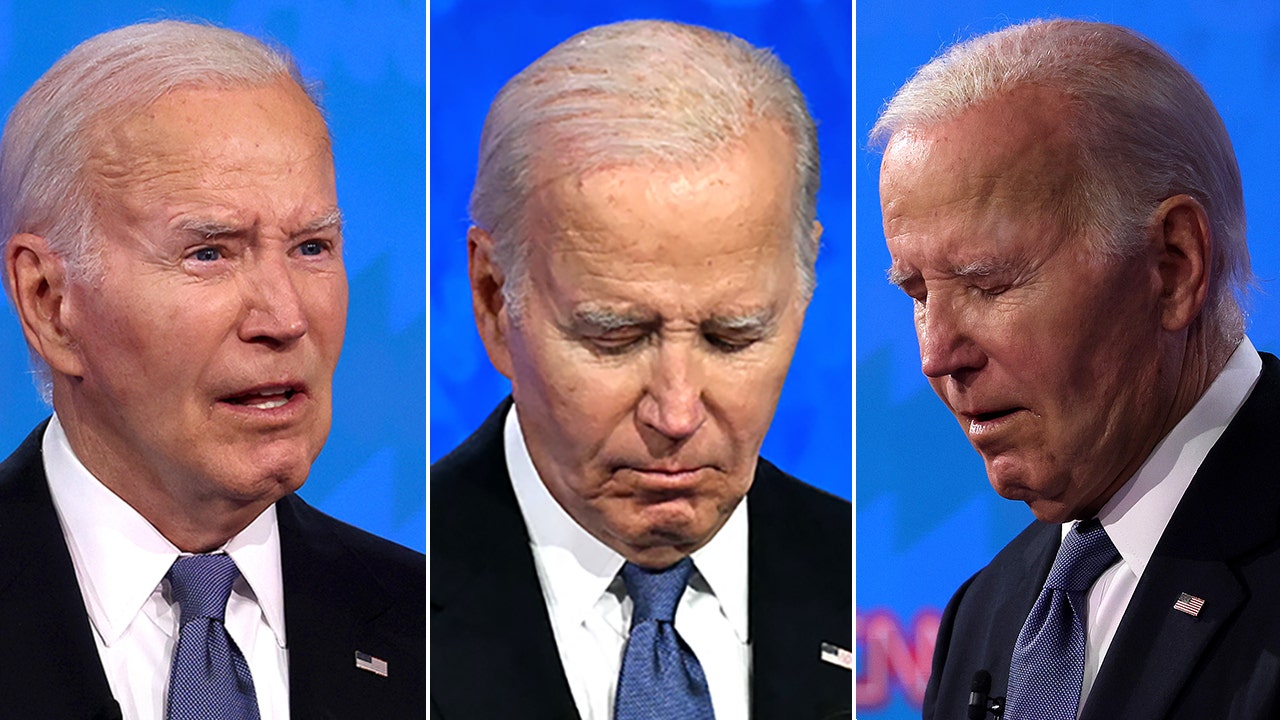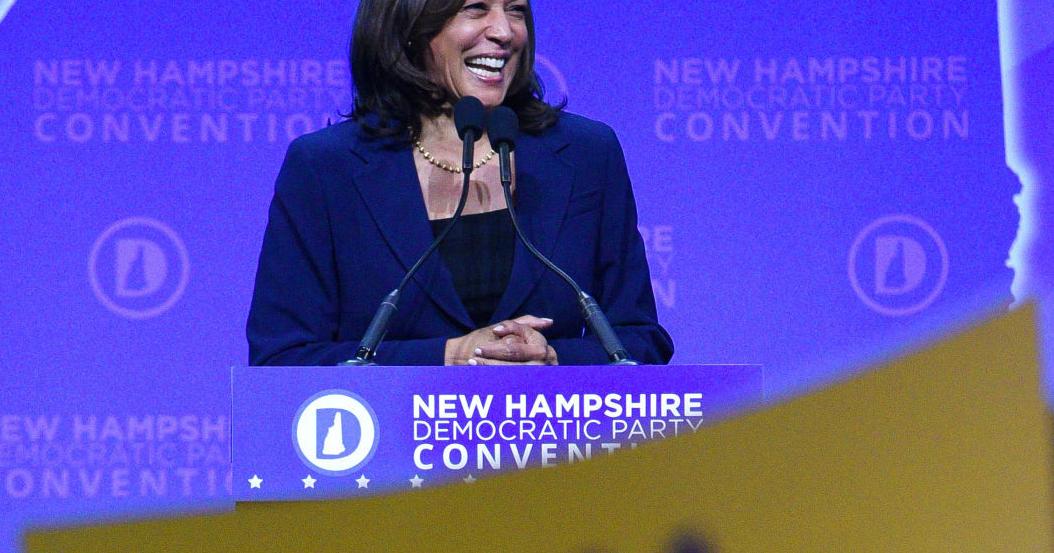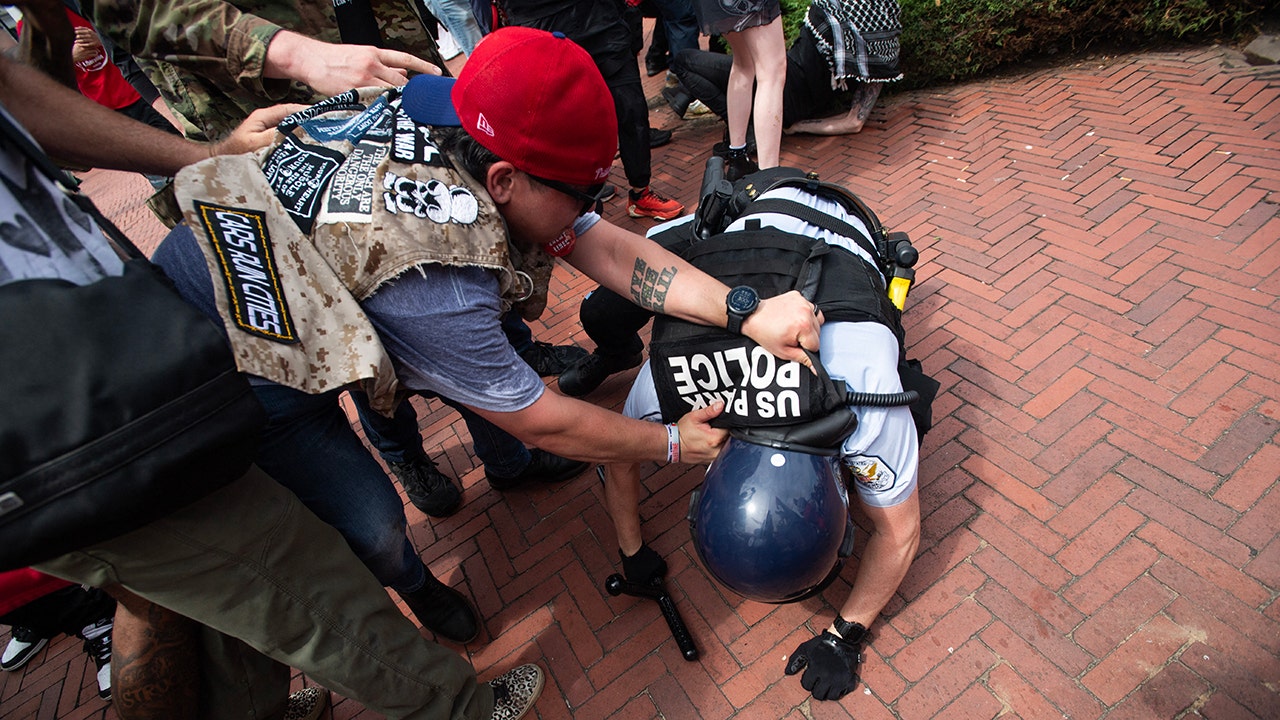Ohio
Ohio's leaders blocked (some) foreign money from issue campaigns. Advocates call it a dog-whistle • Ohio Capital Journal

Ohio’s Republican leadership last month refused to put Joe Biden on the presidential ballot unless the legislature adopted another measure that they claimed would protect against foreign money playing a role in the process by which citizens can initiate laws.
But while some surely were concerned about malign foreigners improperly influencing state policy, some of them seemed to be playing on the same trumped-up fear of foreigners that they do in other contexts.
When earlier problems arose with putting presidential candidates of both parties on the ballot, the legislature passed a “clean” bill fixing the problem as a routine matter.
Moreover, with this latest law, Ohio lawmakers did nothing to bring transparency to dark money, which is flooding the state and can come from any source. It can be from foreigners, organized crime or interested parties — all unbeknownst to the electorate whose laws are being impacted. Such dark money played an indispensable role in the largest bribery scandal in Ohio — a scandal in which many of those same Ohio leaders played a part.
In addition, critics said the move was really intended to make it more difficult for citizens to impose popular measures that the state’s gerrymandered supermajority opposes, such as protecting abortion rights and ending gerrymandering. As part of that, they said, it gives the state attorney general — who since 2011 has been a Republican — greatly enhanced powers to harass citizen-led attempts to change the law.
Xenophobia
Advocates for immigrants and others say that in pushing their “ban” on foreign money, some Republican leaders are playing on the anti-foreigner, anti-immigrant paranoia that Donald Trump has relentlessly whipped up since announcing his candidacy to be president in 2015.
The new legislation not only bans contributions from foreign nationals, it also bans them from lawful permanent residents, or “green card” holders. That’s despite the fact that federal law allows such people to make contributions, and Bill Seitz, an attorney and a Republican member of the Ohio House, warned his colleagues that the prohibition could sink the entire measure in court.
To an immigrant advocate, the dog whistle was easily audible.
“They know what they’re doing, the people who are sponsoring these amendments,” said Lynn Tramonte, director of the Ohio Immigrant Alliance. “They’re making this about people who were born in other countries and adding on new categories of immigrants to be banned from donating money. The legislator who introduced that amendment knows that that makes it open to legal challenge. That was very clear. Both sides — Republicans and Democrats — expect that law to be challenged in court. So it was clearly not about the policy. It was about getting those headlines.”
Some of the amendment’s staunchest supporters haven’t been shy about using such tactics.
Secretary of State Frank LaRose was the first to flag the fact that the Democratic National Convention was too late to get Biden on the ballot under Ohio law. But instead of calling for a clean bill that would only fix that as the legislature had done in the past, LaRose had other demands.
“Ohioans deserve confidence in the integrity of our elections, knowing that they aren’t being bought by foreign bullies or billionaires,” LaRose said in a May press release. “I hope the House does the right thing and takes action soon to close this loophole before it’s exploited again.”
Other motives
LaRose was referring to a Swiss billionaire who had made big contributions to the Tides Foundation, a U.S. group that helped finance Ohio voter efforts last year.
One trounced an August attempt by LaRose and his allies to make it nearly impossible for citizens to initiate amendments to the Ohio Constitution. Then, in November, voters passed an amendment protecting abortion rights by a 14-point margin. LaRose had earlier told an audience of partisans that the August effort was 100% about stopping the abortion-rights measure in November.
It’s not the only time LaRose, the state’s top elections official, has pressed a fear of foreigners into the service of what appear to be ulterior motives.
For example, he’s conducted frequent voter purges, supposedly in the service of election integrity. Last year, he tried to make a splash by announcing that he had referred 641 cases of possible voter fraud to authorities.
Sounds like a lot, but that’s only 0.0044% of the total votes cast. And when the Capital Journal did a follow-up investigation, less than 3% of those resulted in charges.
In other words, just 0.000132% of the total number of votes cast since LaRose took office in 2019 might end in convictions. Yet LaRose last month announced yet another voter purge, claiming the threat of foreigners casting illegal ballots was why it was needed.
“Ohioans overwhelmingly passed an amendment to our state Constitution which makes it clear that only U.S. citizens can vote in our elections,” LaRose said in a May 14 press release. “It is my duty under the law to uphold the Constitution, and the legislature has explicitly tasked me with ensuring that only eligible citizens can register and vote.”
Spreading fear
Elizabeth Neumann was deputy chief of staff of the U.S. Department of Homeland Security during the Trump administration.
During a virtual press conference sponsored by the National Immigration Forum last week, she described how the “great replacement theory” — the idea that there’s a plot to replace white people, especially in positions of power — has led to numerous racist massacres. She said that whipping up fears of illegal voting is a softer version of the same theory that shooters invoked as they massacred people in Christchurch, New Zealand, a Walmart in El Paso, a Pittsburgh synagogue, and a Buffalo grocery store.
“There’s a lot of conversation about how migrants are actually voting and this goes into that softer great-replacement theory and we anticipate that will continue to be a challenge this election year,” said Neumann, who is now chief strategy officer for Moonshot, which works to end online harms such as violent extremism and child trafficking.
Tramonte, of the immigrant alliance, said the real aim of claims of illegal voting and purges and prosecutions is to scare marginal populations away from the polls. She said she helped conduct a focus group before last November’s election.
“I heard from people who were citizens who said they were afraid to vote because they were afraid of being attacked,” she said. “They had a plan to go early in the morning and make sure they could get their vote cast because they wanted to make sure their voices were heard, but they were afraid.”
In addition to not effectively addressing the problem of mystery money in our politics and making it harder and more frightening to participate in the process, there could be a darker consequence of the rhetoric around the bill Republicans demanded in exchange for putting a sitting president on the Ohio ballot.
In an interview, Moonshot analyst Yuri Neves said that political leaders are invoking conspiracy theories when they insinuate that green card holders have a diabolical agenda or that masses of undocumented immigrants are voting illegally.
“It suggests some coordinated plan by nefarious actors,” he said. “Depending on who you talk to, it’s globalists, Jews, etc. When we say it’s a conspiracy theory, it’s not just demographic changes happening as there always are. It’s that it’s some malevolent actors behind it. And that’s where it gets quite dangerous.”
GET THE MORNING HEADLINES DELIVERED TO YOUR INBOX

Ohio
Democratic Ohio Sen. Sherrod Brown loses police endorsement for the first time in 12 years

COLUMBUS, Ohio — For the first time since his Senate career began, Sherrod Brown has failed to earn the Ohio Fraternal Order of Police’s endorsement for re-election — and the union cites the Democrat’s tweet about a controversial shooting.
The Ohio FOP in 2006 endorsed then-Sen. and now-Gov. Mike DeWine, the Republican who lost his seat to Brown in an upset.
Since then, Brown has won the support of law enforcement, deftly navigating the blue-dog politics of an ever-reddening state. But not this year.
“It came down to a tweet,” said Mike Weinman, Ohio FOP spokesman and a retired officer who was paralyzed in the line of duty. “There was a shooting here, and Sherrod, instead of taking time to listen and talk to us and understand the situation, did what all these people do now and got on his phone. Brown made a comment. It’s a shame.”
The incident Weinman refers to dates back to 2021, when Columbus cop Nicholas Reardon fatally shot 16-year-old foster child Ma’Khia Bryant after responding to a domestic-violence call. He arrived at the scene to find Bryant swinging a knife at another young child in the home.
“When he arrived it was complete chaos,” Weinman told The Post. “She was using a weapon on an unarmed person so he had to unfortunately use his service weapon to neutralize the scene. Nobody in that house including the officer is happy that happened, let me tell you. But Brown spoke out quickly against the officer, and a lot of people I think remembered that during the vote.”
The senator tweeted one day after the April 21, 2021, shooting and tied it to another event that day: a former Minneapolis cop’s conviction for killing George Floyd.
“While the verdict was being read in the Derek Chauvin trial, Columbus police shot and killed a sixteen-year-old girl. Her name was Ma’Khia Bryant. She should be alive right now,” Brown wrote.
Bryant’s death also sparked Black Lives Matter protests — she was black, Reardon is white.
But the officer was cleared of wrongdoing, with a grand jury declining to charge him after a review found the shooting justified.
Weinman also says further “statements” from the senator about police may have cost him more votes.
“People here genuinely don’t know where he stands on things like George Floyd and qualified immunity. Our voters know their stuff, and he just wasn’t being clear enough about where he stands. Brown has always been great for supplies, vests, helping us get resources. But I think now our people aren’t as sure they can trust him,” he told The Post.
Weinman explained the endorsement process: An FOP committee screens a small batch of candidates for office. The approved candidates are then brought up for a floor vote.
“They called his name, and it was time,” Weinman said. “He missed it by four votes.”
Brown’s Republican opponent, Bernie Moreno, won’t receive the FOP endorsement this year either, but Weinman says this has more to do with procedure than politics.
“In the past, if a candidate failed to get the votes on the floor, a member could make a motion to suggest a new name, and we could have an immediate, direct vote,” Weinman said. “This year we changed that. Only names from the screening committee could be voted on, and only Brown made it past them.”
The committee passed on Moreno due to his lack of political experience.
“He’s too new,” Weinman said. “Great businessman, potential for sure. But he has to prove it. Like Vance did.”
By this, Weinman is referring to a similar vote in 2018 when then-Senate candidate J.D. Vance was able to win the prized endorsement over more experienced competitors.
“Vance really worked for it. He campaigned. Moreno ran out of time,” Weinman said.
He also confirmed the Ohio FOP will not be making any additional statewide endorsements for 2024.
Brown is the only prominent Democrat left in the soon-to-be-solid-red Ohio, making his race with Moreno one of the most expensive and closely watched in the nation.
Brown maintains a 6.5-point lead over Moreno, but experts expect endorsements like this one and Vance’s emerging role as a national campaigner to have a significant effect on the Buckeye State.
Ohio
A missing 12-year-old Georgia girl is found in Ohio after her community galvanized to locate her

ATLANTA — A 12-year-old girl whose disappearance galvanized a Georgia community has been found in Ohio.
Hall County Sheriff Gerald Couch said Friday that Maria Gomez-Perez was found Thursday in Dover, about 70 miles (110 kilometers) south of Cleveland, in the company of a Guatemalan man who is now jailed.
“I come to you with some very great news,” Couch told reporters in a news conference. “Maria Gomez-Perez has been safe in Dover, Ohio, and she should be on her way home here to Gainesville with our investigators within the hour.”
Gomez-Perez was last seen at the home of her father, Andres Gomez, on May 29 in Gainesville, about 50 miles (80 kilometers) northeast of Atlanta. She was reported missing a day later.
Her disappearance sparked a huge search, with local authorities and businesses offering a $20,000 reward. Volunteers canvassed the community looking for the girl and papered the area with posters, flyers and even billboards seeking the girl’s return.
Couch said investigators found Gomez-Perez had been communicating online with men, expressing unhappiness and saying she wanted to leave home. He said investigators believe Antonio Augustin drove to Georgia, picked up Gomez-Perez, and drove her back to Augustin’s home in Dover. While Couch said Augustin is 31 years old, Ohio jail records list him as 34.
“Let me be very clear on this: Maria is the victim in this case,” Couch said. “And remember, she’s 12 years old.”
Couch said investigators began to home in on Gomez-Perez’s location when she contacted her father using a new Facebook account last week, telling her father that she was OK and not coming home, and asking her father to stop looking for her. Couch said investigators used that message to track down the Facebook page’s internet address, leading them to a phone number associated with a home in Dover.
Four sheriff’s investigators traveled to Ohio this week and spotted Gomez-Perez at a city swimming pool, later arresting Augustin and recovering Gomez-Perez. Couch said Gomez-Perez was examined by medical personnel.
Tuscarawas County jail records show Augustin is being held on a rape charge. Jail records don’t list an attorney who can speak for him and officials with the Tuscarawas County Sheriff’s Office didn’t immediately return a phone call and an email seeking comment.
Couch said Georgia authorities will also be seeking criminal charges against Augustin.
Officials in Georgia had faced initial criticism in the search for Gomez-Perez, in part because the Georgia Bureau of Investigation concluded that her disappearance didn’t meet the criteria for issuing an Amber Alert for missing children. Many residents in the Gainesville area are Hispanic, coming to the city to work in its poultry processing industry, but most officials are not of Hispanic descent, which can create divides.
“It’s hard to put into words what we saw. I just really, really am proud of our community,” Gainesville Mayor Sam Couvillon told The Times of Gainesville on Friday. “Our Hispanic community just really stood up and made their presence known and said, ‘Hey look, let’s shine a light on this missing child.’”
Couch concluded his remarks with a warning to parents to watch their children’s online activity.
“Technology is a wonderful thing. It helped us locate Maria. But technology can also be used for evil. It’s why Maria was able to leave Gainesville with a stranger and travel nine hours away from home,” Couch said. “So please know what your children are doing and who they’re communicating with. They’re our most vulnerable and our most valuable citizens and it is our duty to take care of them.”
Ohio
How JD Vance's Ohio hometown defied his expectations

By Nicholas P. Brown
MIDDLETOWN, Ohio (Reuters) – In his bestselling 2016 memoir, Republican vice presidential hopeful JD Vance questioned whether rural, white Americans, like those in his native Middletown, Ohio, had the drive to reverse their economic decline. But as Vance was writing, his hometown was in the thick of the grassroots revitalization he envisioned.
Vance’s “Hillbilly Elegy: A Memoir of a Family and Culture in Crisis” tried to explain the mindset of white Appalachian voters at a time when many Americans were baffled by the popularity of Donald Trump, who would win the presidential election later that year.
The Yale-educated Ohio senator, who was tapped earlier this month to be Trump’s running mate in the Nov. 5 election, urged this struggling cohort to take more responsibility for its problems, stop looking to government or big companies for solutions, and work harder to improve its lot.
Chunks of Middletown still encapsulate the hackneyed images of the disenfranchised industrial hubs Vance wrote about: shabby strip malls sit along sprawling, potholed thoroughfares in a city where Trump flags fly from pickup trucks.
But there’s a different vibe in the southwestern Ohio city’s downtown. A brewery, wine bar, art collective, and even an opera house surround intersections bridged by sleek brick crosswalks and walls brightened by murals. Rainbow flags, left over from last month’s LGBTQ Pride celebrations, hang in several windows.
It’s part of a revitalization that, while far from complete, conflicts with the 2016 book’s portrayal of a community that is a “hub of misery,” and whose people react “to bad circumstances in the worst way possible,” according to some 20 locals interviewed by Reuters.
“We’ve been through this before, where we’ve had to reinvent ourselves. That’s what I think people lose sight of,” said Sam Ashworth, trustee and former executive director of the city’s historical society.
Ashworth noted that the city’s population, which is about 78% white, experienced industrial shifts throughout the 20th century that saw the loss of jobs in the tobacco and paper industries. “JD’s time in Middletown was very short,” said Ashworth, 83.
The Middletown of Vance’s youth was reeling from contraction and labor disputes at its AK Steel plant, which in 2003 – the year Vance graduated from high school – employed around 4,000 people, sharply down from its heyday in the 1970s.
The 2007-2009 recession compounded the strain, triggering a decline in city property tax revenue. AK Steel continued to downsize, employing about 2,300 people in 2012, municipal financial records show. The plant is owned today by Cleveland-Cliffs Inc.
Vance’s memoir referred to disenfranchised white communities as “a pessimistic bunch,” asking rhetorically if they were “tough enough” to hold themselves accountable for their plight and reverse their fortunes. “We created the (problems), and only we can fix them,” the future U.S. senator wrote.
Middletown, part of a staunchly conservative congressional district that voted overwhelmingly for Trump in the 2016 and 2020 presidential elections, is trying to do just that.
Between 2012 and 2022, the city’s income tax revenue spiked from $19.7 million to $33.6 million, according to official records. Optimism has been further fueled by Cleveland-Cliffs’ announcement this year of a $2 billion investment in its Middletown Works steel plant, and the city has approved a new, $200 million commercial development on 50 acres of municipal land.
The city, with a population of about 51,000, still grapples with high poverty and low median income, and the 75-bed Hope House Mission, a local homeless shelter, remains consistently full, said Tim Williams, the shelter’s vice president of homeless services.
But the situation is improving, and locals credit that to the kind of bootstraps-style initiative whose prospects Vance had questioned. “He makes it sound like this place sucks you in and that you’re destined to fail,” said Rochelle Zecher, a 42-year-old shop owner. “But this community builds itself up.”
Vance’s press secretary had no immediate comment on Reuters’ reporting.
FEDERAL FUNDS
In 2011, the city government and the Middletown Community Foundation created Downtown Middletown Inc, a nonprofit organization that helps market the city’s commercial district. With capital limited after the recession, city leaders got creative in finding money, including by using funds left over from a previous redevelopment loan.
That same year the city persuaded Cincinnati entrepreneur Jim Verdin to refurbish a building that now houses the Pendleton Art Center, creating space for 30 art vendors at little cost to Middletown.
Triple Moon Coffee Company, across the street from the art center, was launched in 2015 by lifelong Middletown resident Heather Gibson, who opened it with funds from her partner’s long-forgotten AK Steel retirement account.
The cafe is one of at least five LGBTQ-owned businesses in Middletown, said Duane Gordon, spokesman for the Middletown Pride Committee, who added that the city’s outreach to a wider array of communities helped spur its economic revitalization.
Middletown navigated the coronavirus pandemic with help from the federal government, receiving $19 million from Democratic President Joe Biden’s American Rescue Plan of 2021. City businesses got a combined $75 million from the Paycheck Protection Program – a business loan initiative signed by Trump and later extended by Biden – according to the federal government’s pandemic spending database.
The Republican Party’s 2024 platform promises to “rein in wasteful federal spending” as a way of “promoting economic growth,” and Vance has voiced skepticism about how much federal policymakers can do for local communities.
But Gibson, who used her PPP loan to open a drive-through behind her cafe, said federal money saved her business.
“It was a sink-or-swim moment,” she said.
(Reporting by Nicholas P. Brown; Editing by Paul Simao)
-

 World1 week ago
World1 week agoOne dead after car crashes into restaurant in Paris
-

 Midwest1 week ago
Midwest1 week agoMichigan rep posts video response to Stephen Colbert's joke about his RNC speech: 'Touché'
-

 News1 week ago
News1 week agoVideo: Young Republicans on Why Their Party Isn’t Reaching Gen Z (And What They Can Do About It)
-

 Movie Reviews1 week ago
Movie Reviews1 week agoMovie Review: A new generation drives into the storm in rousing ‘Twisters’
-

 News1 week ago
News1 week agoIn Milwaukee, Black Voters Struggle to Find a Home With Either Party
-

 Politics1 week ago
Politics1 week agoFox News Politics: The Call is Coming from Inside the House
-

 News1 week ago
News1 week agoVideo: J.D. Vance Accepts Vice-Presidential Nomination
-

 World1 week ago
World1 week agoTrump to take RNC stage for first speech since assassination attempt


















